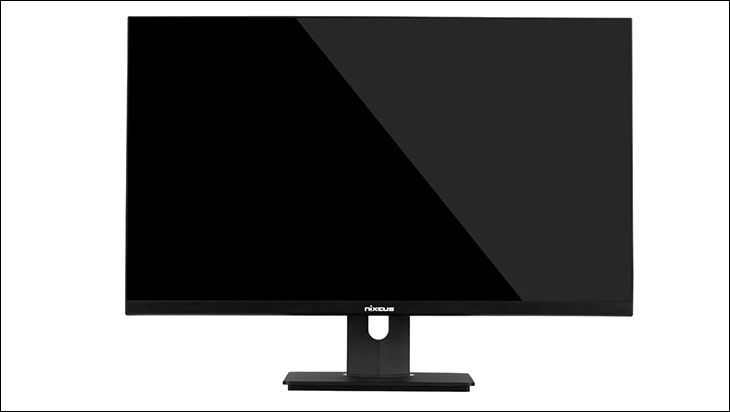
Upon first hearing about the new EDG27X most knowledgeable consumers will want to know what has changed. Simply put… nearly everything. That however is not really an answer. Soh we will try our best to compare and contrast the version 2 with the new X variant of the venerable EDG27 series.
First up, the shipping container. Over the years Nixeus boxes have gone from extremely conservative, some would say ‘boring’, to rather attractive packaging design. The new EDG27X indeed carries on this proud tradition and the new shipping container is both informative and eye catching. This is a box that first grabs your attention and then holds it by then being enlightening. This really is an excellent way to create great first impression.
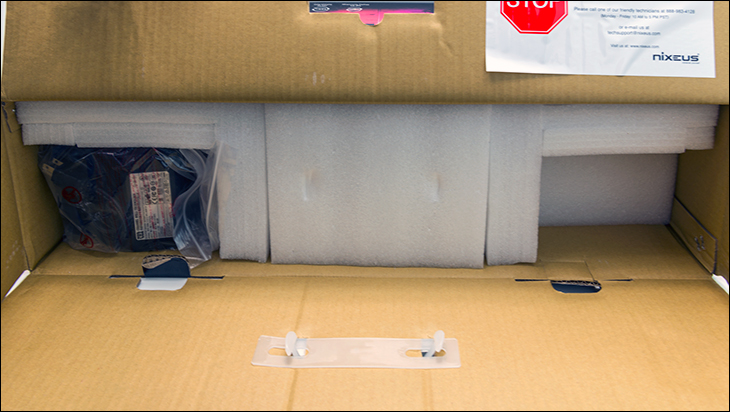
The internal protection configuration is also top notch. If you have never owned a Nixeus monitor that may sound surprising, as most budget orientated monitor companies cut corners here, but Nixeus is known for going that extra mile. In this case, copious amounts of form-fitting Styrofoam fully encase the monitor and even partially cover the accessories. This combination not only keeps the contents safe while in transit but will also give you peace of mind. Be it across town, across the country, or even around the world you can rest assured that it is going to get to you in one piece. Put another way this is classic Nixeus, and we are glad to see they did not ‘upgrade’ things in this critical area.

The included accessories are also classic Nixeus. Expect to find a single, but good, DisplayPort 1.4 cable; an easy-to-understand installation pamphlet; and an external power supply. No goo-gaws. No dross like “Do Not Disturb, I’m Gaming” door hangers. Nothing that would needlessly increase the cost of the monitor without providing tangible benefits. That is the Nixeus way, and we still find it refreshing after all these years. The only one issue that some may have with the accessories included is the lack of a HDMI cable included. We do not consider this a major negative as you really will want to use DisplayPort to get all that 165Hz gaming goodness. You may feel differently. Either way a HDMI cable is a couple bucks these days so even in worst case scenarios it should not be considered a deal breaker.

Moving on to the actual meat of the overview… and there is so many changes it is difficult to know where to start. With that in mind we will try to go in reverse order from least(ish) to most(ish) changed. Of the three EDG27-series monitors the original is arguably the most memorably. Consisting of a quasi-clone of Acer Predator’s “two arms in a V ” approach the V1 was extremely attractive. Took up a ton of room, and thanks to basically only the tips of each arm touching the desk, it did not do too great at its job of providing stability and rigidity… but sure was purdy. With the V2 Nixeus dialed back on the foot-print and went for a rather understated round stand. One that was still a bit on the tippy side of the spectrum. A marked improvement over the V1, but still not perfect. The new EDG27X stand+base once again goes even further into the utilitarian end of the spectrum via a square base (very reminiscent of everything from NEC to ASUS ProArt monitors).
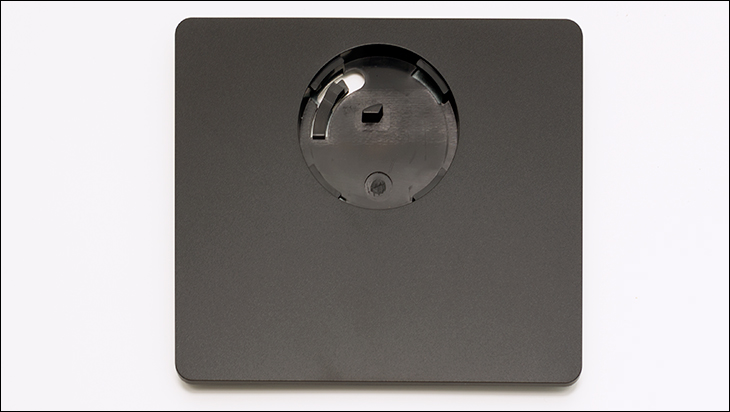
This new base finally provides a firm foundation for the EDG27X. You can bump into the side, the back or even the top of the EDG27X and its not going to tip over like it would with the V1. Furthermore, when you go and use the built in 90-degree rotation abilities the stand offers (aka landscape to portrait mode) you can do so without having to worry about the darn thing falling over.
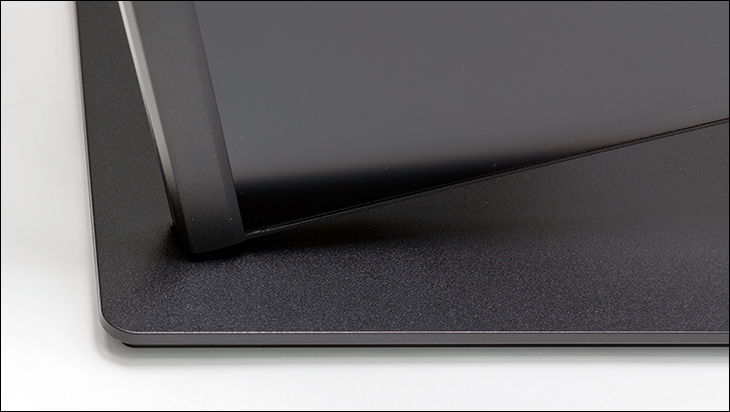
Sadly, like many 27-inch monitors the only way to easily rotate from landscape to portrait mode is to first extend it to the full height, then tilt the monitor back a couple degrees (it offers about 17 degrees of tilt from -2 to +15…ish) and then rotate it. This is because while the EDG27X may offer about 5 inches of height adjustment (i.e. the bottom of the monitor can be 1.25 to 6.25 inches above the base)… it still hits the base when going from land to portrait orientations.
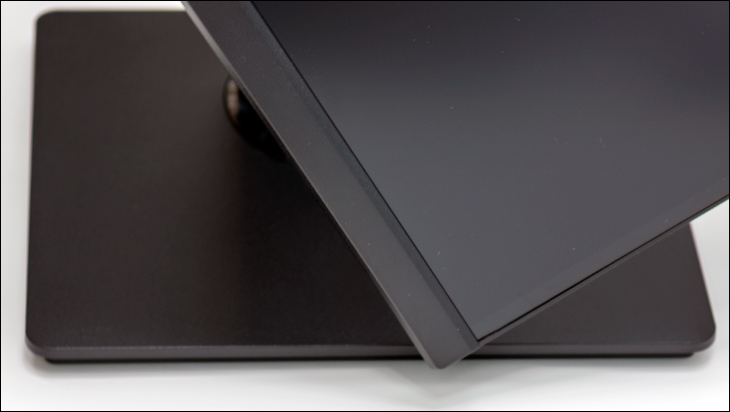
This is a bit frustrating as it would only need about another quarter inch to rotate freely. So close… and yet so far away. To be fair, this is one of the few 27inch monitors (including the EDG27v2) that come so close to not needing to be first tilted. Hopefully the next revision will get that little extra and go from well above average to… extraordinary. So while the EDG27X may still have some room for improvement in the monitor and stand department it is well above average for a 27-inch monitor and well above average for its price range.

Moving on. The connectivity offered. Not much has changed here from its predecessors. Just as with the EDG27 v2 before it the EDG27X offers both HDMI and DisplayPort connectivity options. Oddly, the number has been downgraded from four (two of each) to three – dual full size HDMI and a lone DP. That is still pretty decent, but an odd place to downgrade things. Furthermore, the actual bandwidth each type offers has not been upgraded. Just as with the EDG27v2, the HDMI ports are 2.0 compliant and the DP is 1.2a.
On paper this is a bit disappointing. We have nothing against the use DisplayPort 1.2a instead 1.3/1.4a/2. DP 1.2a can do the full 165Hz at 1440P so going past it would have done nothing for EDG27X owners except increase the price. No, what is disappointing is using the HDMI 2.0 port will result in a bottleneck. Specifically, if you want to use HDMI you will be capped at 144Hz – just like with the EDG27v2. However, the HDMI ports are really intended to be used with PS/Xbox/etc. gaming consoles… and neither do 144Hz at 1440P. Instead, EDG27X is verified to work with both the latest XBOX (S and X) at up to 120Hz at both 1080P and 1440P resolutions, and the PS5 is verified to do 120Hz at 1080P. As a little bonus, the EDG27X not only includes speakers like the EDG27v2 but now also includes a 3.5mm audio jack. Still no USB hub, but it certainly is a step in the right direction.
The On-Screen Display is best described as classic Nixeus. That is to say decent, but nowhere close to offering the abilities that the EDG274K has to offer. Basically, you get multiple physical buttons that are nicely sized, and very tactile for navigating / controlling the OSD… you just will not get 6 axis color correction or other highly advanced features. For professionals, this may or may not matter (as most should already own a colorimeter and not be messing with on screen tweaking). For home user’s the standard R/G/B options are ‘good enough’… as R/G/B is a lot easier to get things dialed in ‘good enough’ without the hassle factor that 6-axis color correction is notorious for. The only minor niggle we have is the buttons are located on the back of the panel and not bottom of the bezel. If you use a multi-monitor setup that will be suboptimal if this is the center (3 monitors) or left panel (dual). So choose its location wisely. Thankfully for average John and Jane Q public it is not a big deal. Just something you need to be aware of.

The thickness of this monitor and the overall aesthetics have indeed been improved over previous Nixeus monitors – including the EDG274K. In addition to the nice red accents on the back of the monitor Nixeus has gone for an ‘invisible’ or ‘thin’ bezel approach. Basically, the only bezel you will see is the bottom one and the other three sides are hidden behind the ‘edge to edge’ semi-gloss Anti-Glare screen covering.
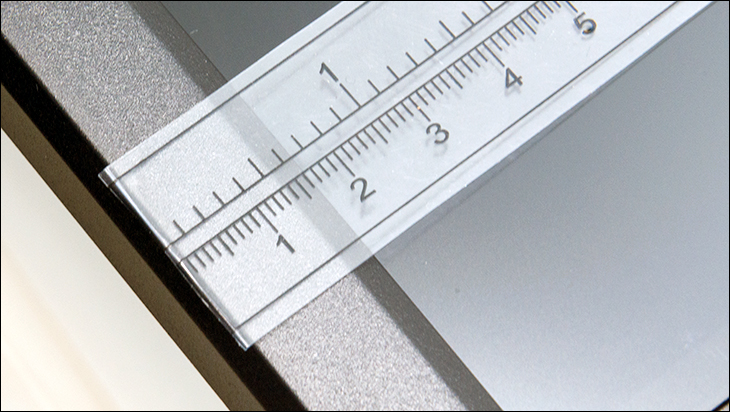
Now with that said this is not a true edgeless monitor. There are bezels on those three sides. They are just hidden. With that said they have been narrowed to the point most will not care that it is not a ‘true’ edgeless design. The left, right and top are about 9’ish millimeters thick and the bottom is about 15.8mm. This is a massive reduction over the EDG27v2 and even the EDG274K. Put simply when you stick two of these X’ers together the gap between them will be a lot narrower than with most. Color us impressed.
